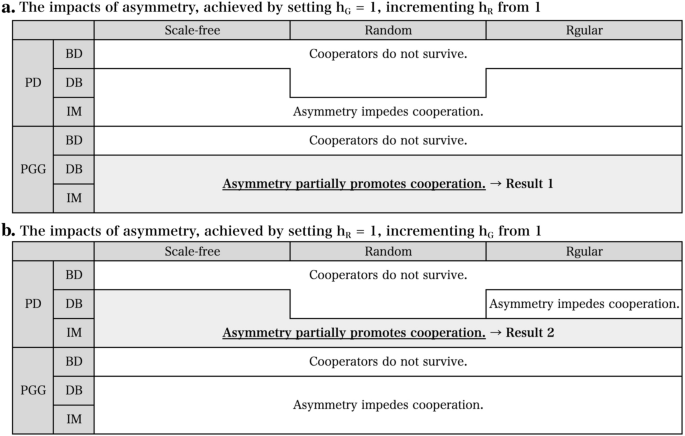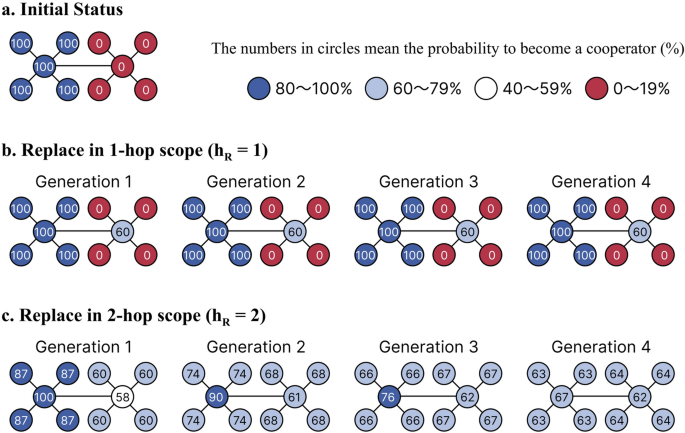・We focus on a particular type of symmetry, namely, symmetry in the scope of communication, to investigate whether cooperation is promoted or hindered when interactions and strategy replacements have different scopes.
・Previous studies on the evolution of cooperation in multiplex networks have shown that cooperative behavior is promoted when the two key processes in evolution, interaction and strategy replacement, are performed with the same partner as much as possible, that is, symmetrically, in a variety of network structures.
・Through multiagent simulations, we found some cases where asymmetry can promote cooperation, contrasting with previous studies.
Abstract
Our study is focused on one particular symmetry, which is the symmetry of scope on communication. We examine whether cooperation is facilitated or impeded when interactions and strategy replacements have different scopes. We model the evolution of cooperation in multiplex networks consisting of two layers, namely, an interaction network and a replacement network, by using a multiagent simulation. We performed extensive simulations of various network structures, interaction rules, and replacement rules, and we found that in the following two cases, asymmetry promotes cooperation, contrary to previous studies. (1) In the case of public goods games on scale-free networks, when the scope of interactions is narrow, replacements over a wide range are more likely to spread cooperation than over a medium range. (2) In the case of prisoner’s dilemma games on scale-free, random, and regular networks, when the scope of replacements is narrow, only when the scope of interactions is 2 hops are there cases where the cooperation rate increases sharply.
Benefit
We found in this study that asymmetries in the scope of interactions and strategy replacements can promote cooperation in certain cases. These are novel phenomena that have not been mentioned before and might contribute to a deeper understanding of the relationship between the evolution of cooperation and the symmetry of communication.
Market Application
For future research, by refining our model to account for the complexity of human incentive systems, our model may contribute to a deeper understanding of cooperative behavior, which is a foundational aspect of social activities. Additionally, establishing connections with empirical studies in diverse fields such as economics, sociology, and anthropology may further enhance the model’s applicability and effectiveness.
Publications
https://www.nature.com/articles/s41598-023-37074-4



